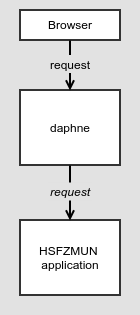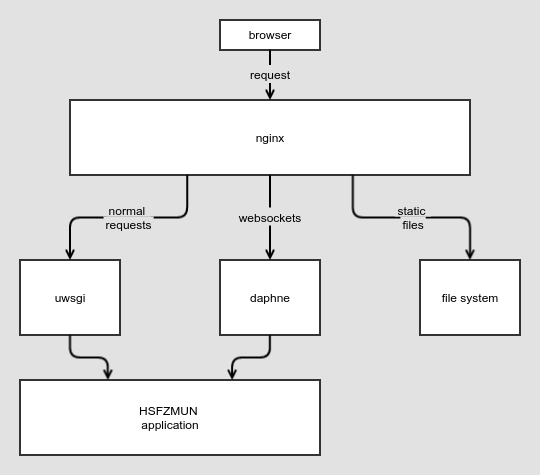动机
pure functions 看似完美,但却不能模拟现实世界中的诸多任务。这是由于 pure functions 是良定的映射,对于特定的输入值会返回唯一的输出。这种模式在面对如下任务时会显得苍白无力:
- 有可能失败的任务。如大多数的 IO。
- 依赖外部状态的任务。如(伪)随机数生成器。
- 非确定性任务,即对于确定的输入可能有多个输出。这种在 IP 中较为少见。
- 对外界会造成影响的任务。如大多数的写入过程。
这些问题可以用数学中的域扩充技巧来解决。
域扩充
在数学中,当定义问题的范畴不足以容纳问题的解时,我们通常会对相关的范畴进行扩充。类似的技巧同样也可以应用在这里。
假设一个不良定的函数 f: A -> B:
- 如果
f有可能失败,我们可以将B扩充为Err(B) ∪ { reasons of failures },其中reasons of failures可能是对异常的描述,也可以是空值一类的东西。则f': A -> Err(B)是良定的映射,且与f行为一致。事实上,这就是 Maybe Monad 和 Either Monad。 - 如果
f依赖于外部状态,我们定义Pref(B)为 从外部状态空间到 B 的映射的全体,则f': A -> Pref(B)为良定的映射,且行为和f一致。换言之,对于特定的输入a,f'(a)返回一个函数,其中蕴含了已知a时如何从各种不同状态得到结果的逻辑。事实上,这就是 State Monad。 - 如果
f具有非确定性,我们将B扩充为Power(B),即B的幂集。则f': A -> Power(B)为良定的映射,且行为与f一致。事实上,这就是 List Monad。 - 如果
f依赖于真实世界,我们将B扩充为IO(B),其中的元素为一些值域为B的伪函数,可能对真实世界有影响。这些伪函数已经脱离了 pure functions 的范畴,但将它们看成元素是没有问题的。如此一来f': A -> IO(B)为良定的映射,且行为与f一致。事实上,这就是 IO Monad。
以上操作都有一个共同点,即对一个不良定函数的值域做了扩充,使之变成良定函数。如果用 Haskell 语言描述,它们都有相似的型:f :: a -> m b,其中 m 为扩充规则。
一个问题随之而来:这样的新函数该怎么结合?为此我们要对相关逻辑进行抽象。这就是 Monad。
Monad
这里我们尝试从实际需求出发,导出一个 Type Constructor 成为 Monad 的必要条件。
约定两个名称:
- 称
a -> m b型函数为 monadic function - 称
a -> b型函数为 non-monadic function
首先需要解决的是 monadic functions 如何结合的问题。这个问题具有重要的现实意义。monadic function 常常代表某种计算任务,它们之间的结合相当于把若干计算任务串行化,而后者是非常常见的需求。
我们希望有一种运算符有如下的类型 (b -> m c) -> (a -> m b) -> (a -> m c),在此记为 >=> (因其形状,常被叫做 fish operator)。一个自然的想法是,Monad m 需要某种平凡的拆箱操作 extract' :: m a -> a。所谓“平凡”,即 extract' 不应该丢失参数的任何信息。但这往往不能实现,因为 m a 通常会比 a 包含更多的信息,导致 extract' 无法构成良定的映射。例如 Maybe a 中的值 Nothing 就无法在 a 中找到对应的值。
而事实上,我们不需要条件这么强的拆箱操作。在 m 已是 Functor 的情况下,拆箱操作可以弱化为 join :: m (m a) -> m a。我们尝试用 fmap、 join 合成 >=>。
f :: b -> m c
g :: a -> m b
fmap f :: m b -> m (m c)
(fmap f) . g :: a -> m (m c)
join . (fmap f) . g :: a -> m c
-- i.e.
f >=> g = join . (fmap f) . g
Functor 的假设是容易成立的。当然我们可以定义多个不同的 fmap,如此产生的 Monad 会有不同的语义。join 的假设也是容易成立的,m (m a) 通常和 m a 包含相同多的信息。故此做法是实际可行的。
我们再考虑 monadic function 和 non-monadic function 结合的问题。期望有如此一个运算:>.> :: (b -> c) -> (a -> m b) -> (a -> m c)。注意,此处返回值是 a -> m c 而不是 a -> c,因为我们不希望 a -> m b 产生的额外信息有所丢失。自然地,我们希望有一个平凡的装箱操作,return :: a -> m a。如此一来便可结合 >=> 完成上面的运算:
f :: b -> c
g :: a -> m b
return . f :: b -> m c
(return . f) >=> g :: a -> m c
-- i.e.
f >.> g :: (return . f) >=> g
non-monadic function 和 monadic function 另一个方向的结合是平凡的。
综上我们可以得到成为 Monad 的基本条件:
- 是 Functor,存在
fmap :: (a -> b) -> m a -> m b - 有一个平凡的拆箱操作
join :: m (m a) -> m a - 有一个平凡的装箱操作
return :: a -> m a
为了描述平凡,我们要求三个函数必须满足如下公理(下面的 f 为 non-monadic function):
return . f == (fmap f) . return(return的平凡性)join . fmap (fmap f) == (fmap f) . join(join的平凡性)
事实上在 Category Theory 中,还有另外两条公理:
join . (fmap join) == join . joinjoin . fmap return == join . return == id以上四条公理描述了
Id(恒等 Functor)、m、m^2、m^3之间的泛性质,并使图交换。
Monad Typeclass
以下为 Prelude 中的定义:
class Functor m => m a where
return :: a -> m a
(>>=) :: m a -> (a -> m b) -> m b
此处没有出现 join,也没有 fish operator,而是使用了一个更常用的算符 >>= (通常称为 bind operator)。这是因为在实际中我们不直接将函数结合,而是使用 non-pointfree 的写法。
此外,还有 >> :: m a -> m b -> m b 运算符。return、>>=、>> 三者是构成 do-notation 的基础。此处不再赘述。


